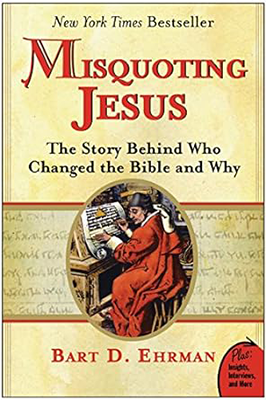Misquoting Jesus
“Misquoting Jesus: The Story Behind Who Changed the Bible and Why” is a book by Bart D. Ehrman, published in 2005. It explores the process of textual transmission and the variations found in the manuscripts of the New Testament. Here’s a summary:
In “Misquoting Jesus,” Bart D. Ehrman examines the complexities of textual criticism and the challenges of reconstructing the original text of the New Testament. He argues that the manuscripts of the New Testament have been subject to changes and alterations over time, both intentional and unintentional, resulting in variations in the texts that have been handed down to us.
Ehrman begins by providing an overview of the process of textual transmission in the ancient world, discussing the methods used by scribes to copy manuscripts and the factors that contributed to errors and variations in the texts. He explains that the earliest copies of the New Testament were written on papyrus scrolls and later on parchment codices, and that the transmission of the text was a manual and labor-intensive process that was prone to mistakes.
One of the central themes of “Misquoting Jesus” is the issue of textual variants in the manuscripts of the New Testament. Ehrman discusses specific examples of variations in the texts, ranging from differences in spelling and word order to more substantial changes in wording and content. He argues that these variations are the result of scribal errors, deliberate alterations, and the influence of theological beliefs and agendas.
Ehrman also explores the implications of textual criticism for our understanding of the New Testament and its teachings. He discusses how variations in the manuscripts can affect our interpretation of key passages and doctrines, and how scholars use various methods and criteria to determine the original wording of the text.
Throughout the book, Ehrman emphasizes the importance of critical scholarship and historical inquiry in evaluating the reliability of the New Testament. He challenges the notion of biblical inerrancy and argues that the study of textual variants can deepen our understanding of the complexities of the biblical text and the history of early Christianity.
Overall, “Misquoting Jesus” offers a compelling and accessible introduction to the field of textual criticism and its implications for the study of the New Testament. Ehrman’s engaging narrative style and scholarly expertise make the book an informative and thought-provoking read for both scholars and general readers interested in the Bible and its transmission.

